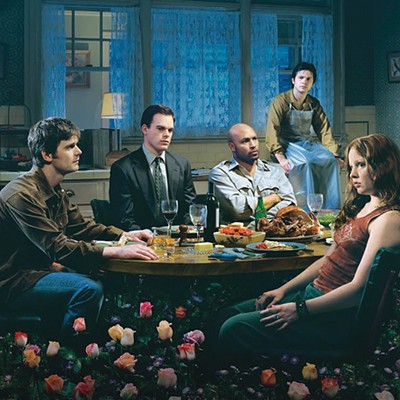'm not sure if this is a description someone has used before, but if not, I would like to coin it now: In describing films like "Fargo," "A Simple Plan," "In Order of Disappearance, "The Snowman," "Wind River" and the rest of the genre of red blood on white snow in a darkly humorous crime movie — Film Snoir.
The hype on "Wind River" has been heavy, but not overpowering. It's the directorial debut of Taylor Sheridan, the actor-turned-screenwriter responsible for "Sicario" and "Hell or High Water." Critics and audiences alike wanted to see if he could translate his crackling dialogue, flawless sense of place and heavy characterization into something visually mesmerizing. On that front, the movie is a success. It's so beautiful to look at, audiences will be swept away by it even if the pacing is slower than they're used to.
The film follows Cory Lambert (played by Jeremy Renner in the best work of his career) as a U.S. Fish and Wildlife Agent called to the Wind River Indian Reservation because of a report that livestock are getting mauled by a possible mountain lion. Lambert is primarily a hunter and tracker. He starts following the tracks and instead finds the body of 18-year old Natalie Hanson. He teams with fish-out-of-water federal agent Jane Banner (a captivating Elizabeth Olsen) and the tribal police chief (the always solid Graham Greene) to track the killer.
"Sicario" and "Hell or High Water" are thematically similar. Both are about American failure. "Sicario" centers on the militarization of police and the constant escalation of a drug war that will never end. "Hell or High Water" is fascinated by the unsung and dying corner of America that has lost everything to the banks.
"Wind River" wants to have something profound to say about the massive American failure of how our government treats Native Americans, but all of that subtext plays as text. Everyone says what they mean without leaving much room for thematic depth. Instead, the true success of "Wind River" lies in its portrait of grief and how easy it is to be swallowed whole into its bottomless depths.
"Wind River" is being advertised as a mystery/thriller, which is partially true. But Sheridan isn't as interested in the "whodunit" aspects of the story as he is exploring the dynamics of some complex characters. While Olsen's role definitely has some meat to it, Sheridan's script focuses on Lambert and the past trauma he's working through.
Lambert lost his daughter years prior, in a similar way to Natalie Hanson. He sees this hunt as making up for never catching his daughter's killer. We know this not because of subtlety or character, but because Lambert's ex-wife says flat out: "Whatever you're looking for, you're not going to find it." Film is such a beautiful medium because we can figure out what actors are thinking based on the nuance of their performances. To spell out whatever is going on beneath the surface with dialogue ruins any emotional impact those moments have.
Don't get me wrong, "Wind River" is a very good movie filled with moments of singular beauty and grace—but it doesn't carry the power of Sheridan's previous work. This movie could have easily emotionally wrecked its audience, but instead seems to be content to act like that bright blood in the snow: once noticed, it's impossible to miss, but easily covered up by just a few more snowflakes.
Wind River
Dir. Taylor Sheridan
Grade: B+
Old Mill Stadium 16 & IMAX





















